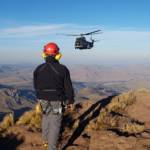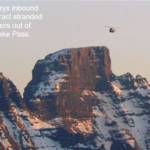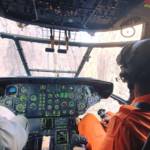When you hiking, in some far and remote valley and your friend is lying there in a desperate medical situation, you will realise that actually God flies in a helicopter! In South Africa, he most likely flies in a very specific type!
When starting to write this post, I decided to split it into two sections: today will deal with understanding helicopters and tomorrow I will deal with how to prepare for a helicopter airlift out of the mountains.
In the context of the wilderness and mountain rescue, one has to understand some basic facts about helicopters. Firstly, they are extremely fragile, temperamental and expensive machines. They also, just like a road vehicle for instance, have specific capabilities and limitations. What one type is capable of, is different to what the next type is able to do.
As this series is mainly about mountain rescue situations, the over-riding aspect of this post will be to do with how a helicopter can or on the other hand, cannot perform well, high in the mountains. Without getting into the science of it, simply consider the following aspects, which all cause a decrease in performance and in simple terms, make a helicopter tend to want to fall back to earth under the pull of gravity.
They are:
1. The higher in the air a helicopter flies, the less lift/ performance it has, especially at low speeds.
2. Higher ambient air temperature equals less performance.
3. High humidity causes lower engine performance. What can be done on a dry chilly morning at dawn, maybe different to what can be done at 2pm on the same day, in hot humid conditions.
4. More fuel onboard causes less lift.
5. More rescuers onboard causes less lift.
6. Rapidly descending air from above causes less lift, which is common in mountain valleys.
7. Side winds can cause the tail rotor to be less effective, in turn causing the aircraft to want to spin- especially at high altitude, and while at low speed.
Coupled with all these factors is the amount of lift created by forward speed when air passes over the rotor blades, rather like the lift created when a Frisbee is thrown forward. This means that as a helicopter slows down, manoeuvring in and out of valleys and mountains, the amount of lift decreases. If it needs to land or even worse, stop and hover to hoist people down, it is at this point where the most amount of power is needed and the most amount of fuel is being burnt. (Pilots will usually check the available power/ lift by standing off the rescue site, in clear air to see if there is enough power to perform a hover, before committing to a landing or hover close in to mountain. This is known as a power check)
After one considers all these factors there are 4 other aspects:
A – Is the pilot/s and crew current and trained for mountain flying?
B – Does the aircraft have a winch or some other means of attaching a rope to the the air frame?
C – Is the crew and ground team actually trained and current in using this technique?
D – Is there actually an aircraft available?
When all these factors are considered, in South Africa there are not many choices for technical mountain rescues, especially in high, remote areas. Most rescues, therefore, are carried out by the South African Air Force with Mountain Club rescue members onboard. Over and above this, one type of helicopter stands head and shoulders above the rest- the legendary Oryx. These aircraft are the number one choice for mountain rescues, loved by the crews who fly them and the rescuers alike.
Yes, in mountain rescues in South Africa, God flies in an Oryx.


